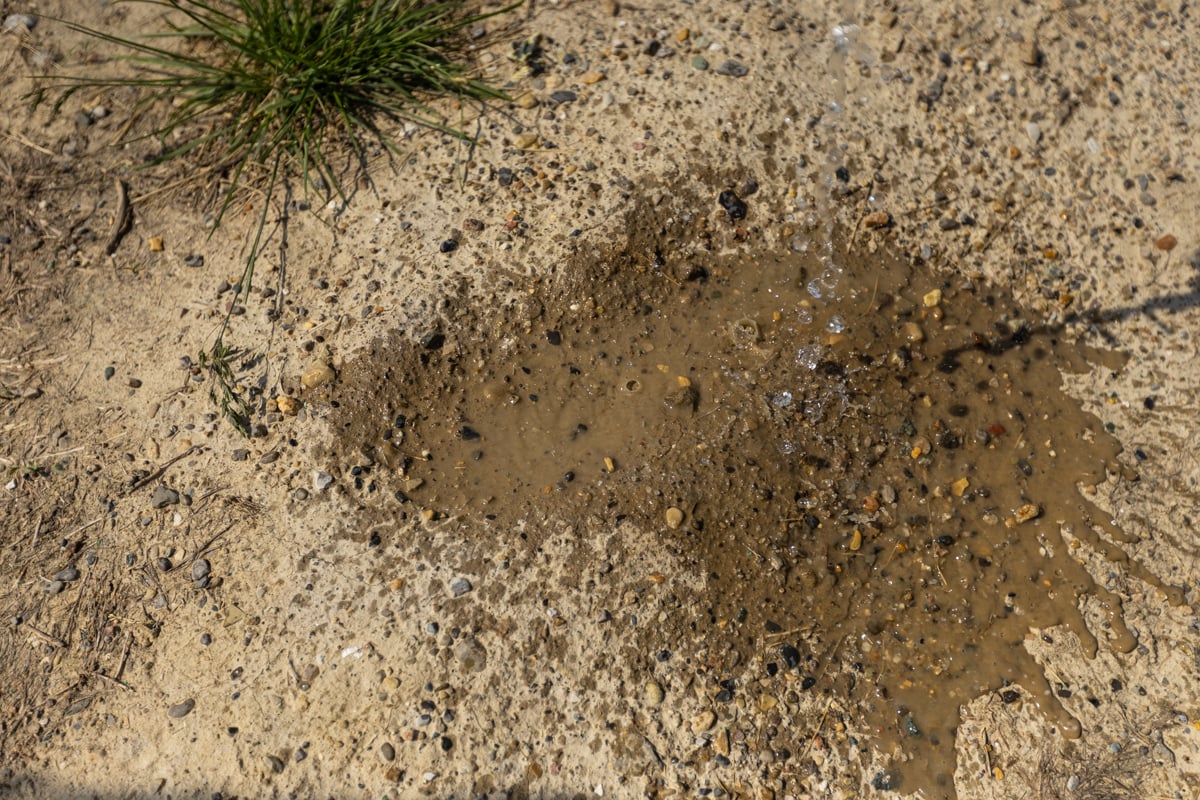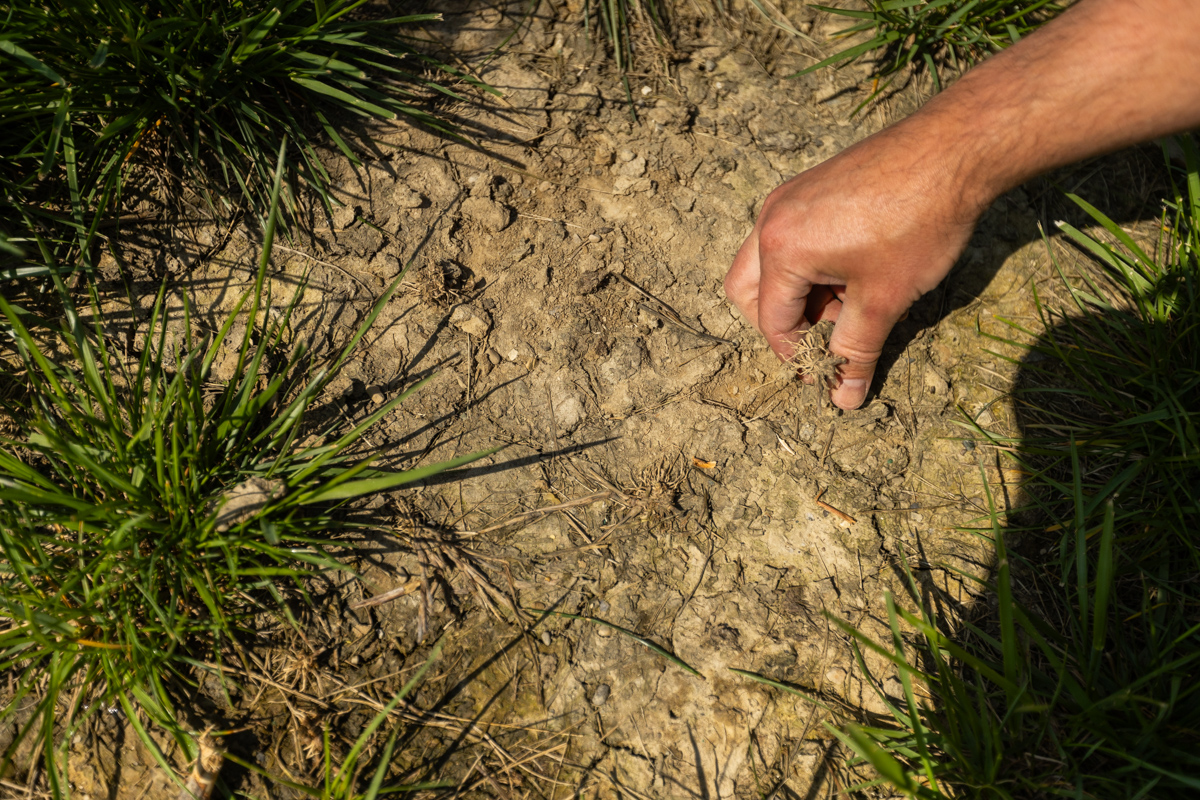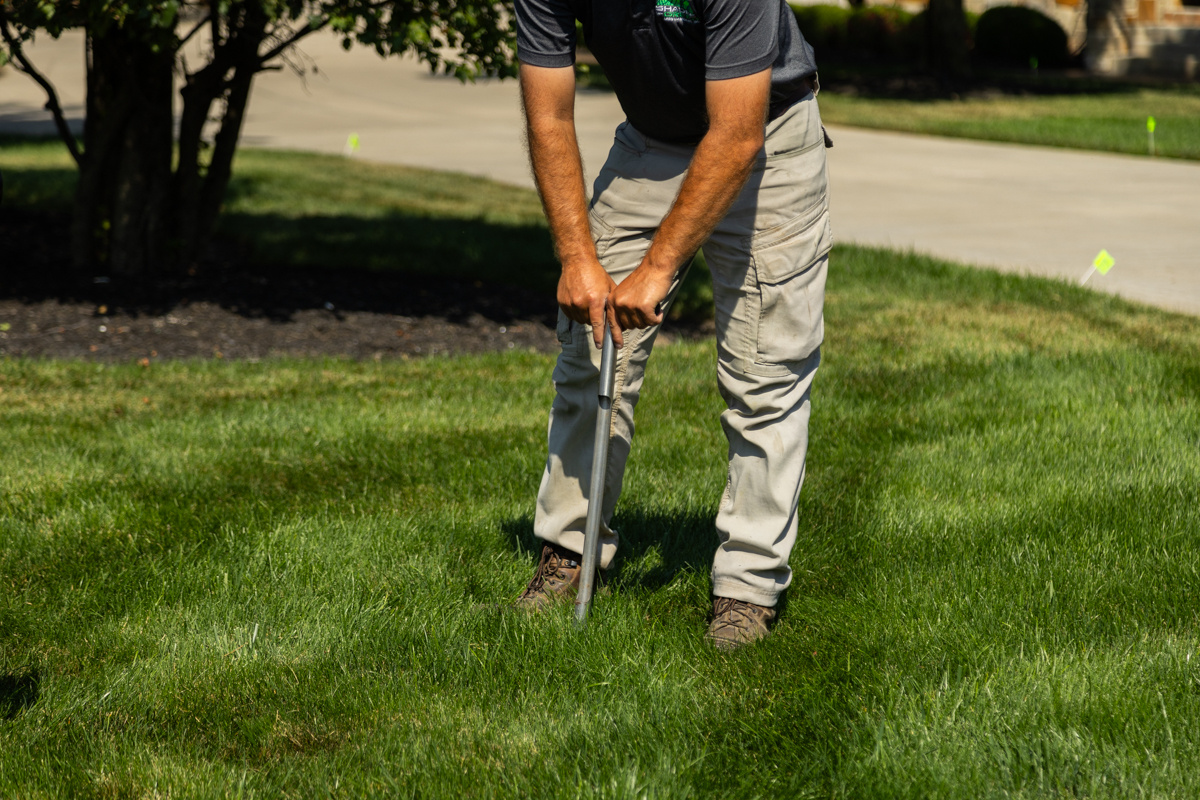


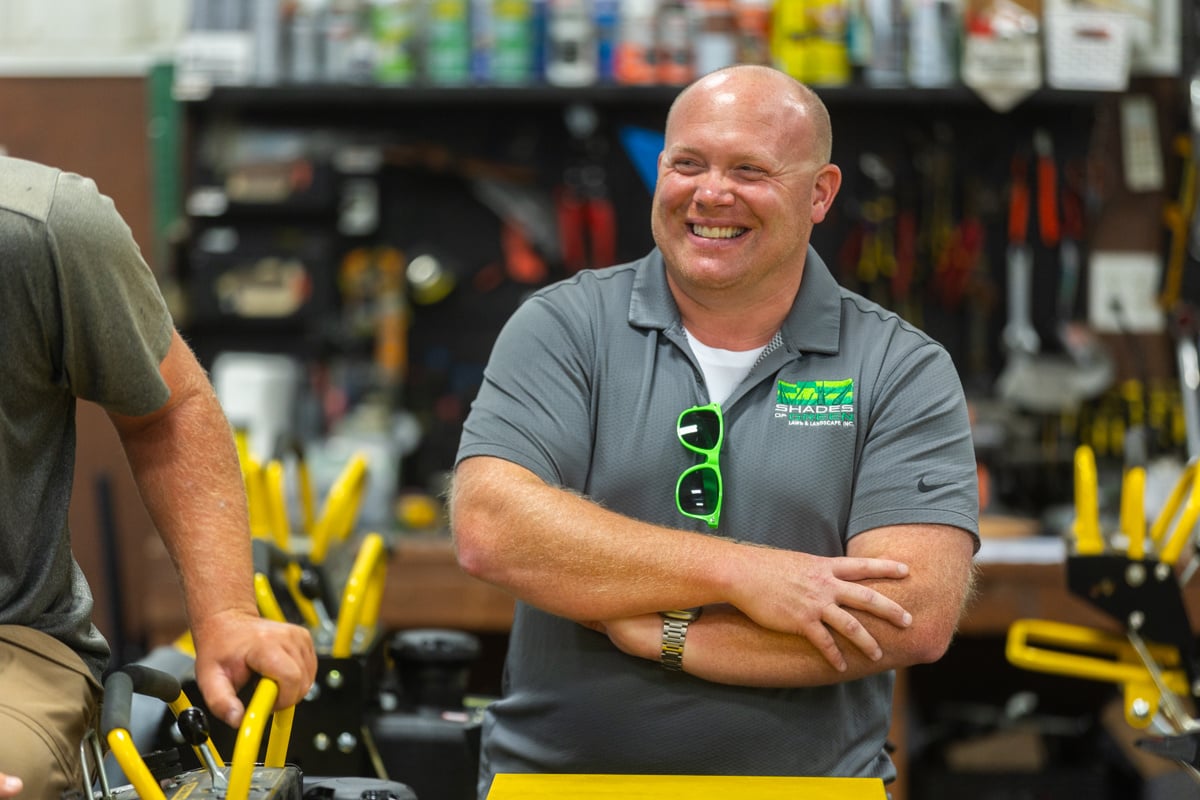
You might be mowing, watering, and feeding your lawn like clockwork, but if it still looks thin, yellowed, or just plain sad, it’s not your effort that is the problem.
The real issue often starts in the soil that supports your grass. The reason your lawn struggles could potentially be compacted ground, depleted nutrients, and missing microbial life.
Let’s break down:
Why Many Indiana Lawns Need Soil Repair
How Soil Health Differs from Lawn Health
How to Improve Soil Health
How We Evaluate and Treat Soil Health at Shades of Green
If your entire lawn looks tired, thin, or dull, the underlying problem is often the soil itself. Years of mowing, foot traffic, and seasonal weather can compress soil and strip it of its nutrients, leaving a yard that simply can’t absorb and use the water and plant food you give it. The result is a lawn that never looks as green or as vibrant as it should, even when you are doing everything ‘right’.
Visible signs of poor soil health include an overall turf decline:
These symptoms can be tricky because they mimic other problems, but the real issue is below the surface.
If your lawn seems to be struggling and, no matter what you do, it simply cannot bounce back, it is time to take a serious look at soil health.
When most people think about lawn care, they think about what they can see, like greener grass, fewer weeds, and a more beautiful and uniform appearance. But true lawn health starts underground. There’s a big difference between taking care of the surface and nurturing the soil that supports it.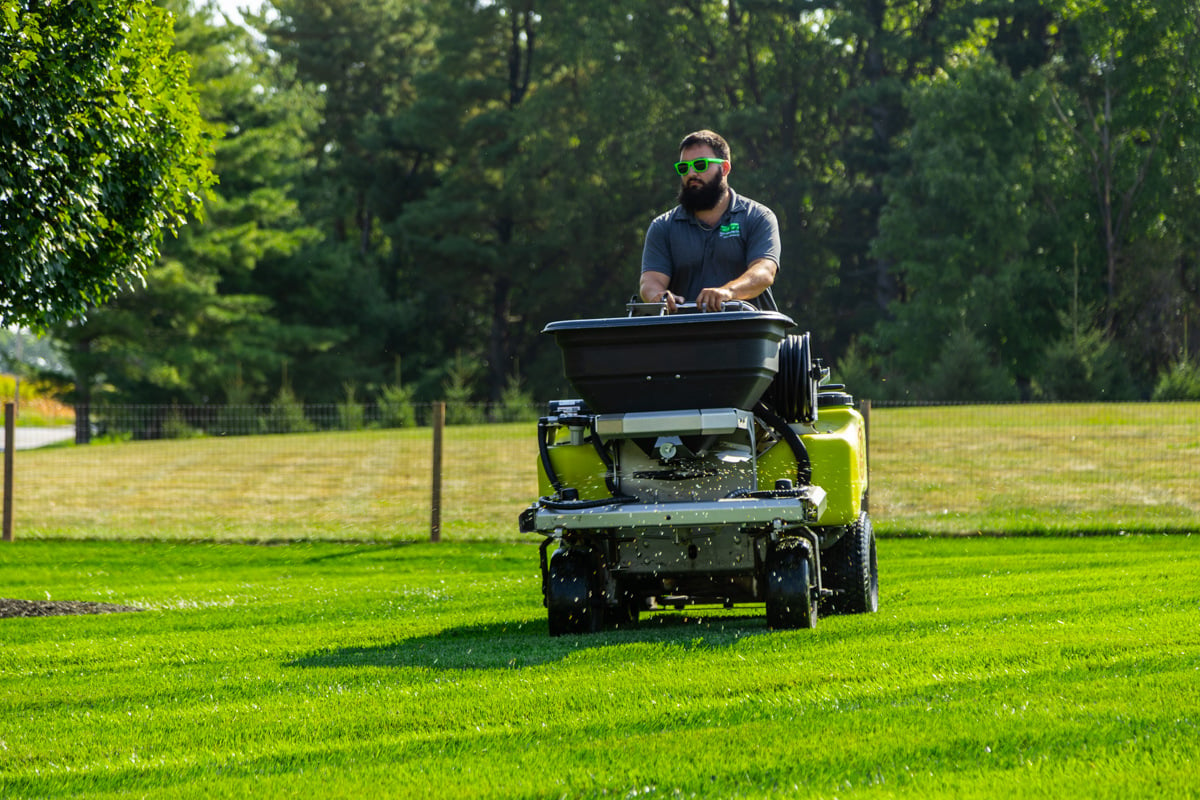
Fertilization, for example, focuses on feeding the grass blades and the root systems of the plant. It delivers nutrients that help your lawn look lush and green. But if the soil beneath it is compacted, lifeless, or lacking microbial activity, even the best fertilizer can only do so much. Without healthy soil, the nutrients can’t penetrate where they are needed most.
So, if you’ve been feeding your lawn without seeing the results you hoped for, it might be time to look deeper, literally. Focusing on soil health is the key to achieving a healthier lawn, because strong, living soil leads to stronger roots, greener growth, and lasting results from season to season.
Whether your soil is compacted, stripped of nutrients, or just tired from years of stress, there are proven ways to restore balance and help your lawn flourish.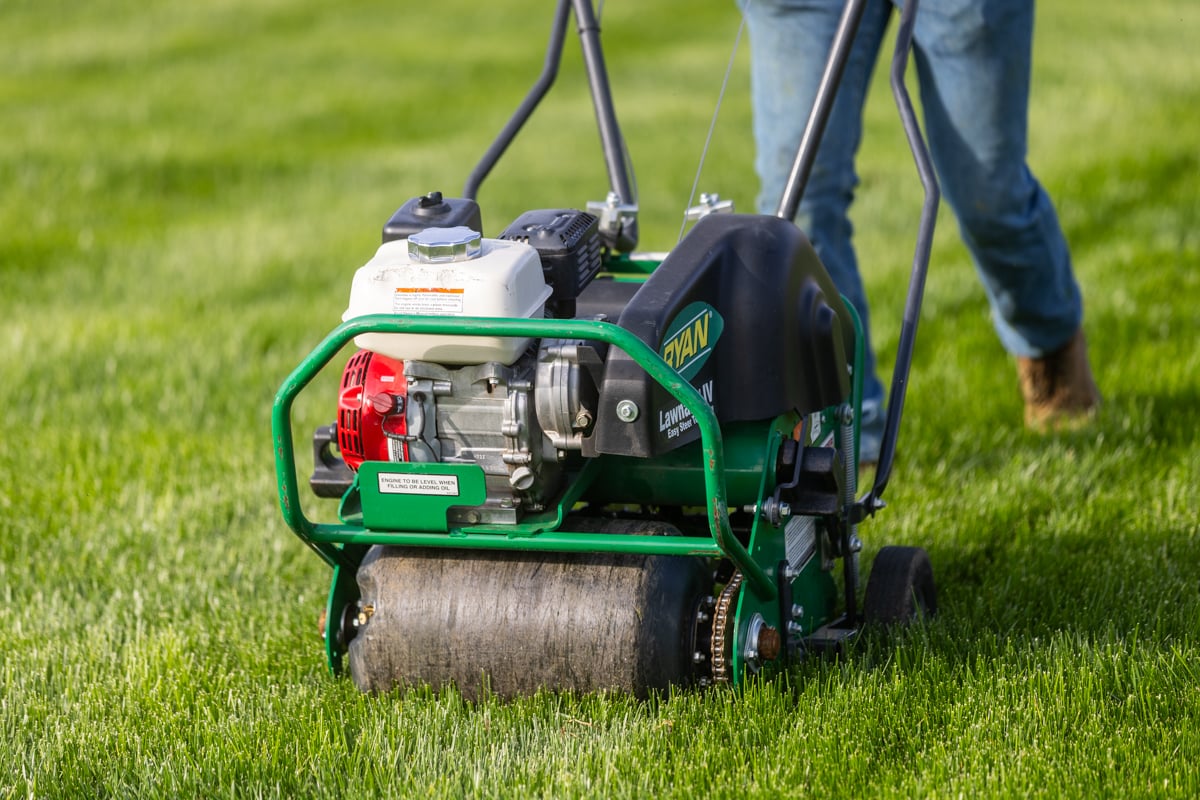
Aeration is one of the most important steps in improving soil structure. When soil becomes compacted, air, water, and nutrients can’t reach the roots. By aerating regularly, you loosen the soil and allow your lawn to absorb more of what is provided instead of losing it to runoff. Each time the roots grow and die, they leave behind tiny channels that act as pathways for air and organic matter to move deeper, a natural process that continually improves soil health and structure.
Overseeding and soil treatment for lawns work hand-in-hand with aeration to strengthen the root system. Aeration creates the perfect environment for new seed to take hold, while soil-level treatments, such as liquid aeration, probiotics, and organic soil amendments, enhance microbial activity and nutrient cycling. These soil treatments for lawns help restore the living ecosystem underground.
This is especially important for lawns in newly developed areas or those built on depleted soils. Construction often removes the nutrient-rich topsoil, leaving behind dense, compacted layers devoid of beneficial microbes. By reintroducing organic matter and new beneficial microbes, you can dramatically improve lawn soil quality in Indiana and rebuild the natural systems your turf needs to thrive.
The good news is that great soil health also means fewer weeds. Weeds tend to thrive where the soil is compacted or unbalanced. When your lawn is rooted in rich, well-aerated soil, it grows thicker and stronger, leaving little room for weeds to take hold. When you focus on how to loosen soil and how to fix bad soil conditions, you are creating the foundation for a healthier and more resilient lawn.
At Shades of Green, we know that a vibrant and resilient lawn starts with healthy soil. That’s why our lawn care programs include targeted soil-building treatments that are timed to maximize results. Our premium plans include:

Soil health is the foundation of a vibrant, healthy lawn, and it is often the piece that is overlooked when lawns struggle. Compacted soil, nutrient imbalances, and depleted microbial life can make it difficult for even the most diligent lawn care routine to produce the results you want.
With years of experience assessing Indiana soils, targeted soil treatments, and carefully timed programs like our Spring and Fall Soil Builders, we help your lawn build strength from the soil up. By addressing the true causes of poor growth, your struggling turf can bounce back.
If your lawn isn’t living up to its potential, it might be time to focus on what is beneath the surface.
Frustrated with your struggling turf? Get started on soil repair today by filling out our contact form.
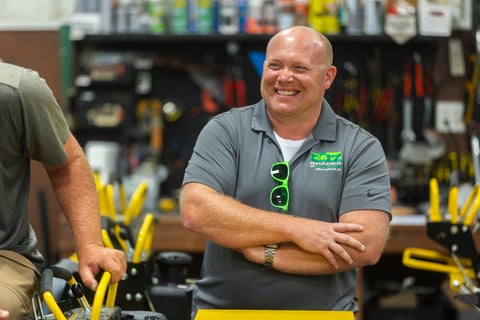
Cory is the heart and soul of Shades of Green. His dedication to doing right for our customers has been the driving force behind the company's success. With a degree in Turf Science from Purdue University, Cory continually strives to craft the best treatment plans using the latest technologies and innovative products, ensuring top-notch results for every client.


